Design Studies for The Zero-G Eye.

Four Ducted Fans wrapped in donuts

Four ducted fans wrapped in donuts. This idea is obviously UFO inspired. Two of the four electric impellers will run clock-wise, two of them counter-clockwise. Like that, the helicopter can be controlled by a combination of speed changes of the four rotors. (The Keyence Gyrosaucer and Engager, as well as the Roswell Flyer use the same technique. And here is the Engager manual, for more details.) The donuts can be filled with helium to produce additional lift. Additionally, they act as bumpers or airbags if the helicopter bumps into something. The batteries and the rest of the electronics are placed in the sphere in the middle. (Ken Perlin gave me the tip to tilt the donuts slightly to the center. Like that the vessel will gain stability.)

Four Ducted Fans in an inflated basketball
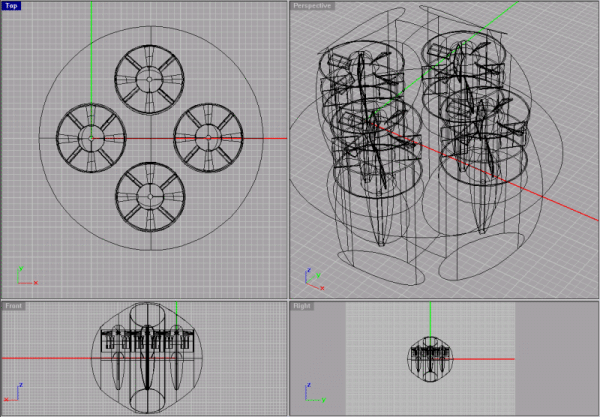
Another idea was to put the four ducted fans in a sphere. The ball would hide all internal "organs," just hovering "magically." Of course the sphere does not have to be massive: filled with a gas lighter than air increases the lift remarkably. However, there are two problems: first, a sphere takes a lot of space--it makes the heli look big, and that's not what I want. Second, the center of gravity is in the middle, close to the propulsion units. Because of that, the heli would tip over very easily. To prevent that, the control system needs to have a very short "reaction time."
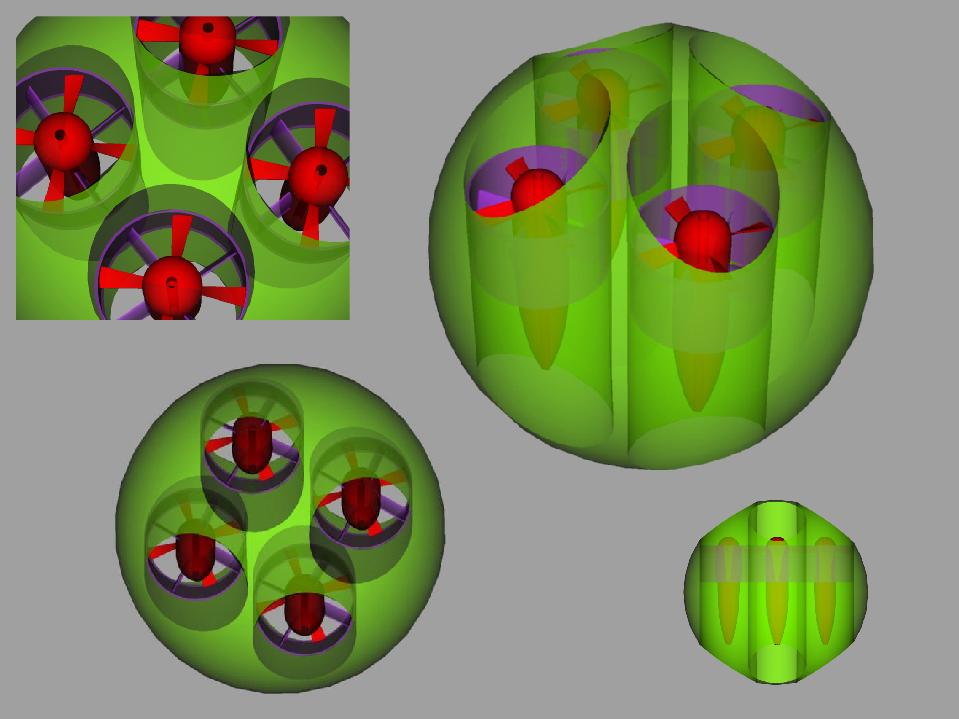
Four Ducted Fans in bedroom lamp
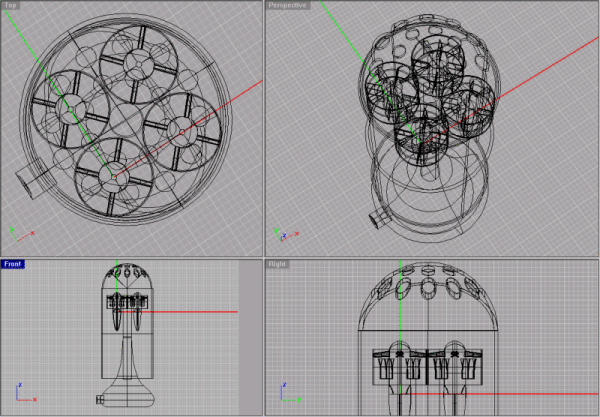
Four ducted fans in a bedroom lamp. The idea behind this design is that the lower the center of gravity, the slower the helicopter will get out of balance. It still won't be stable like that, but roll and pitch changes will not occur as sudden as with a flat vessel like the donuts or the sphere. The purple, transparent hull protects the fans and prevents people from touching the rotors. The batteries and the electronics sit on the bottom of the foot of the "lamp."

Four Ducted Fans attached to a tetrahedron
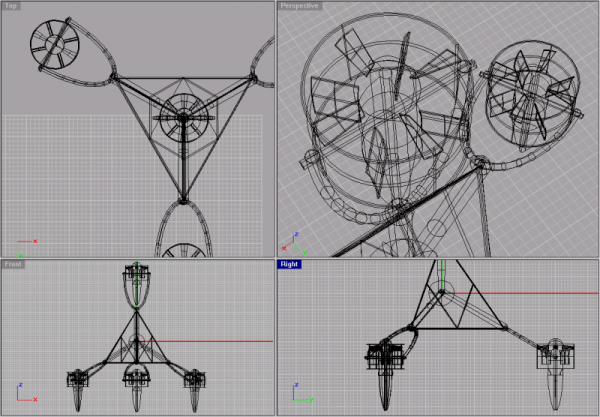
Four ducted fans attached to a tetrahedron. If four impellers are mounted with two degrees of freedom (pan and tilt) in the corners of a regular tetrahedron, the vessel would be very universal and agile--and on the other hand, very unstable. The advantage of such a configuration is that the vessel can roll 360 degrees (there is no top or bottom), and do other unconventional flight maneuvers. Unfortunately, the spiky ends of the ducted fans as well as the air intake openings are not protected. Additionally, rotating the ducted fans and tilting them needs probably very powerful servos. (Thanks to Dan Overholt for the brainstorming.)
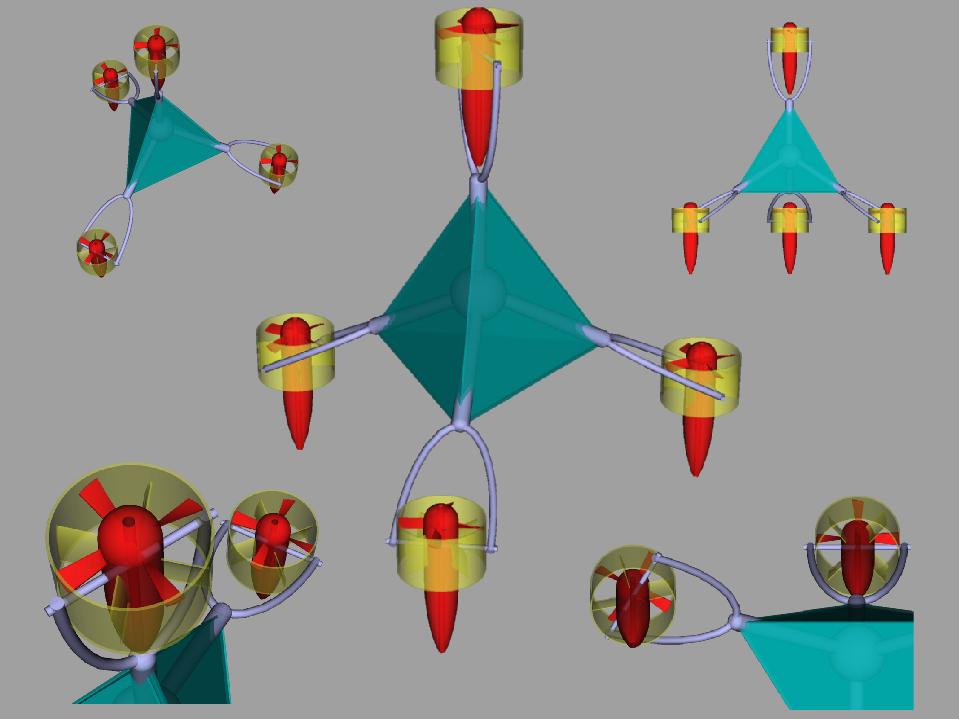
One Ducted Fan on a stick
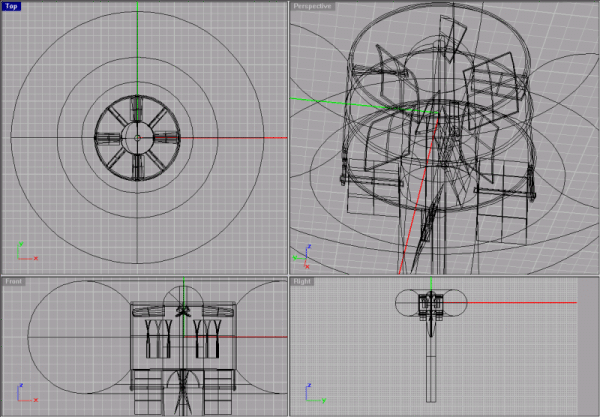
One ducted fan on a stick. After I have heard how loud electric ducted fans are, I thought about concepts with as few as possible noisy engines. I have tested one small ducted fan. I was holding it vertically, and surprisingly, the tendency to yaw--the torque reaction--was not very significant, once the fan has started up. This is probably because the mass of the rotors is relatively small compared to normal helicopter rotors. So I came up with the idea that four small ailerons could compensate for the yaw tendency. The same ailerons could be used to deflect the airflow to move the vessel backward, forward, and sideward. If the mixing of the yaw, roll, and pitch function is made by the control system, four servos are necessary, one per aileron. (However, if there are separate ailerons for the yaw compensation, only three servos would be necessary--but more ailerons.) The battery cells are placed at the very bottom of the tube to keep the center of gravity as low as possible. And again, the donut is filled with air or helium to provide additional lift and to protect the impeller.
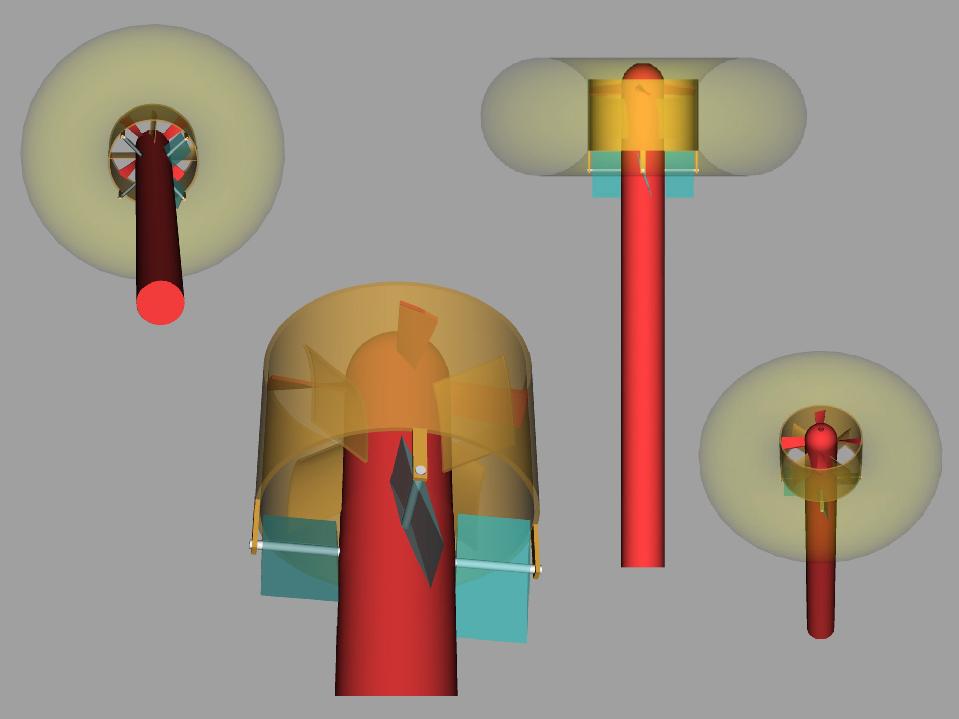
Related technical stuff: Free Flying Micro Platform.